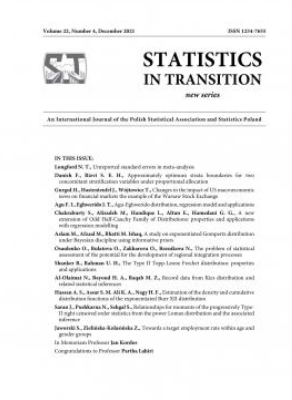Modelling the occupational and educational choices of young people in Poland using Bayesian multinomial logit models
Modelling the occupational and educational choices of young people in Poland using Bayesian multinomial logit models
Author(s): Wioletta GrzendaSubject(s): Labor relations, Methodology and research technology, Socio-Economic Research, Sociology of Education
Published by: Główny Urząd Statystyczny
Keywords: young people; labour market; education; multinomial logit model; Bayesian approach;
Summary/Abstract: Binomial logit models are commonly used in the analysis of the situation of respondents on the labour market. Consequently, in most cases researchers consider two states: of being unemployed and employed or economically inactive and active. This paper focuses on the situation of young people aged 18 to 29 on the labour market in Poland. A major part of the people who comprise the studied group are still in education or combine education with work. Therefore, the participants of the research were divided into the following groups: the employed and not learning, those combining education with work, the unemployed, learners/students only, and those economically inactive and not at school. The model allowing an analysis which includes both the most common division into working and nonworking persons as well as the division proposed in this study is a nested logit model. This model has a hierarchical structure and is a special case of a multinomial logit model. In this paper, all models were estimated within the Bayesian approach. The findings show that continuing education by young people may result from their problems with finding a job; moreover, combining work with education is not the preferred form of professional activity. In addition, the study examines the inequalities observed on the Polish labour market.
Journal: Statistics in Transition. New Series
- Issue Year: 22/2021
- Issue No: 3
- Page Range: 175-191
- Page Count: 17
- Language: English

